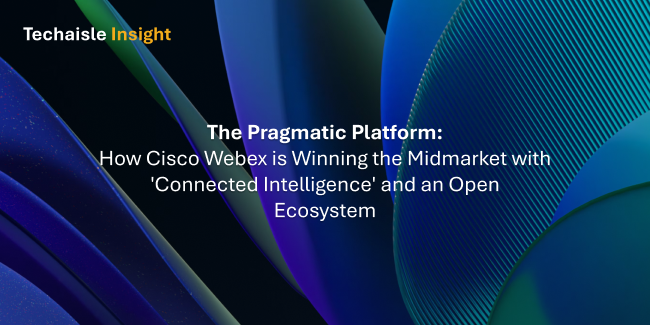For years, midmarket businesses have been caught in a difficult position, forced to choose between the chaos of disparate, best-of-breed point solutions and the restrictive "walled gardens" of single-vendor platforms. At WebexOne 2025, Cisco presented a compelling third way: a vision of "Connected Intelligence" that delivers the power of a deeply integrated, cross-portfolio platform without the penalty of a closed ecosystem. This strategy, which Techaisle defines as Pragmatic Platformization, is a masterclass in meeting customers where they are. It is also the realization of a vision Techaisle first articulated in our 2018 white paper, "Interwork: the next step in connected businesses." In that analysis, we identified that the future of business IT would be defined by an 'Interwork platform' built from the interconnection of seven key domains, including "Connected security," "Connected collaboration," and "Connected insights." Cisco's 'Connected Intelligence' strategy is a powerful, real-world execution of this very concept. By combining the unique strengths of its networking, security, and collaboration portfolios while simultaneously forging deep, native integrations with its staunchest competitors, Cisco is building a platform that is uniquely suited to the heterogeneous and investment-conscious nature of the midmarket.

The 'One Cisco' Advantage: From Metal to Model
The foundation of the Connected Intelligence vision is the "true platform effect" that comes from leveraging Cisco's entire technology stack. This is not just a marketing concept; it is an organizational and engineering reality that allows Cisco to solve problems that no pure-play collaboration or networking vendor can address alone.
The most powerful new expression of this is the extension of AI Canvas to the collaboration portfolio. Initially announced for networking and security, AI Canvas is a collaborative, AI-powered troubleshooting tool. Integrating collaboration data means an IT admin can now investigate a "poor call quality" complaint and see correlated data from the Webex application, the user's Meraki access point, and the underlying Catalyst switch, all in a single, "multiplayer" interface. AI Canvas can then identify the root cause—such as a misconfigured QoS policy—and suggest a fix that can be applied in minutes, not days.














